Paronychia nail infection treatment. Paronychia: Causes, Symptoms, and Effective Treatment Options
What are the main types of paronychia. How is acute paronychia different from chronic paronychia. What are the most effective treatments for paronychia. How can paronychia be prevented.
Understanding Paronychia: An Overview of Nail Fold Infections
Paronychia is an inflammatory condition affecting the tissue surrounding fingernails or toenails. This common nail disorder can be classified into two main types: acute and chronic paronychia. Each type has distinct causes, symptoms, and treatment approaches. Understanding the differences between acute and chronic paronychia is crucial for proper diagnosis and effective management.
What is Paronychia?
Paronychia occurs when the soft tissue around the nail becomes inflamed or infected. It typically affects the lateral or proximal nail folds, which are the skin folds that frame and protect the nail plate. The condition can cause pain, swelling, redness, and in some cases, the accumulation of pus.

Acute vs. Chronic Paronychia: Key Differences
- Onset: Acute paronychia develops rapidly, while chronic paronychia persists for six weeks or longer
- Causes: Acute paronychia is usually caused by bacterial infection, whereas chronic paronychia is often multifactorial
- Affected nails: Acute paronychia typically affects a single nail, while chronic paronychia may involve multiple nails
- Treatment approach: Acute paronychia often responds to short-term interventions, while chronic paronychia requires long-term management
Acute Paronychia: Causes, Symptoms, and Diagnosis
Acute paronychia is a sudden-onset infection of the nail fold, typically resulting from trauma to the cuticle or surrounding skin. This type of paronychia usually develops within a few days of the initial injury.
Common Causes of Acute Paronychia
The primary cause of acute paronychia is direct or indirect trauma to the cuticle or nail fold. This trauma can occur through various means:
- Nail biting or finger sucking
- Manicure procedures, such as aggressive cuticle trimming
- Ingrown nails
- Hangnails
- Minor cuts or splinter injuries
- Artificial nail application
These injuries create openings in the skin barrier, allowing bacteria to enter and cause infection. The most common pathogen responsible for acute paronychia is Staphylococcus aureus, although other bacteria such as Streptococcus pyogenes, Pseudomonas pyocyanea, and Proteus vulgaris can also be culprits.
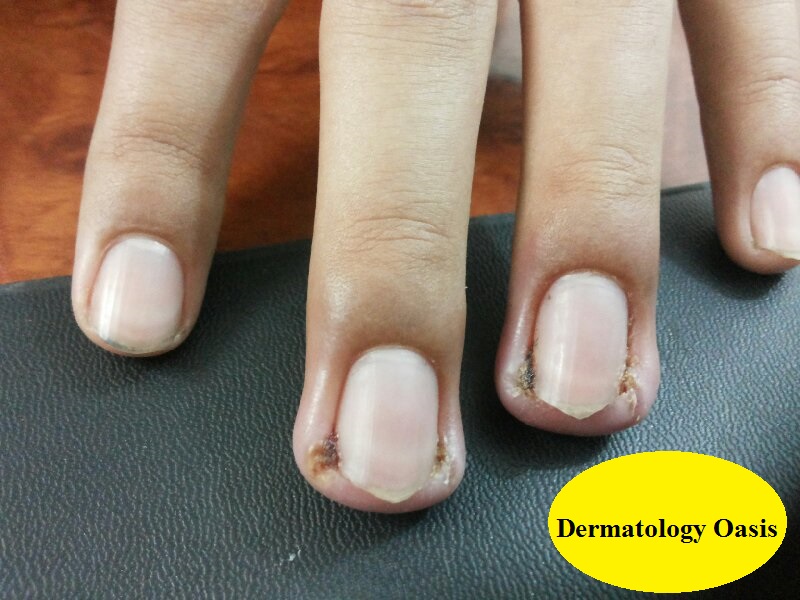
Recognizing the Symptoms of Acute Paronychia
Acute paronychia typically presents with the following symptoms:
- Rapid onset of redness and swelling around the nail fold
- Pain and tenderness in the affected area
- Warmth around the nail
- Possible pus accumulation
- Difficulty performing tasks with the affected finger or toe
Diagnosing Acute Paronychia
Diagnosis of acute paronychia is typically based on clinical presentation. However, in some cases, additional tests may be necessary:
- Physical examination: A healthcare provider will assess the appearance of the affected nail and surrounding tissue
- Digital pressure test: This can help determine the presence and extent of an abscess in the early stages of infection
- Culture: If an abscess is present, a sample may be taken for bacterial culture to identify the specific pathogen
Chronic Paronychia: A Persistent Nail Fold Condition
Chronic paronychia is a long-lasting inflammation of the nail fold that persists for six weeks or longer. Unlike acute paronychia, chronic paronychia is often multifactorial and can be more challenging to treat.

Factors Contributing to Chronic Paronychia
Chronic paronychia results from a complex interplay of factors, including:
- Repeated exposure to irritants and allergens
- Prolonged moisture exposure
- Fungal infections, particularly Candida species
- Underlying skin conditions, such as eczema or psoriasis
- Immunosuppression
Identifying Chronic Paronychia Symptoms
The symptoms of chronic paronychia differ from those of acute paronychia in several ways:
- Gradual onset of symptoms
- Persistent swelling and redness of the nail folds
- Tenderness and discomfort rather than acute pain
- Irregular or ridged nail appearance
- Possible separation of the nail from the nail bed (onycholysis)
- Involvement of multiple nails
Treatment Approaches for Acute Paronychia
The treatment of acute paronychia depends on the severity of the infection and the presence of an abscess. Early intervention is crucial to prevent complications and promote faster healing.
Conservative Management for Mild Cases
For mild cases of acute paronychia without abscess formation, the following conservative treatments may be effective:
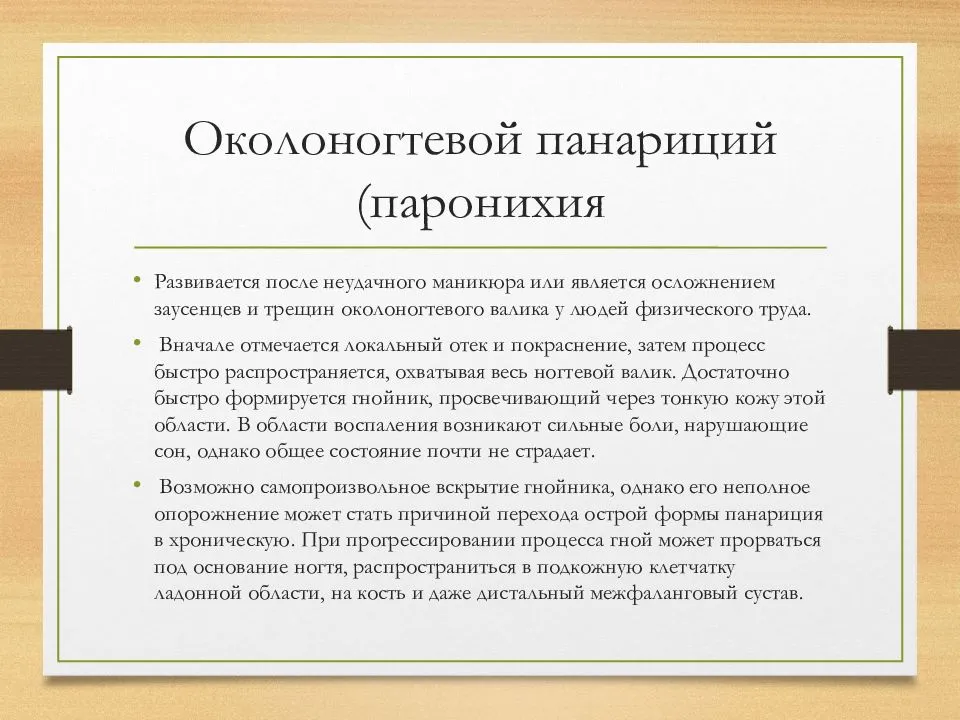
- Warm compresses: Apply warm, moist compresses to the affected area for 15-20 minutes, 3-4 times daily
- Topical antibiotics: Over-the-counter or prescription antibiotic ointments can help combat bacterial infection
- Oral antibiotics: In some cases, systemic antibiotics may be prescribed, especially if the infection appears to be spreading
- Elevation: Keeping the affected hand or foot elevated can help reduce swelling and discomfort
Surgical Intervention for Severe Cases
In cases where an abscess has formed or conservative treatments have failed, surgical intervention may be necessary:
- Incision and drainage: This procedure involves making a small incision to drain the accumulated pus
- Partial nail avulsion: In some cases, partial removal of the nail plate may be required to adequately drain the infection
Is incision and drainage more effective than oral antibiotics for acute paronychia? Current evidence suggests that there is no significant difference in outcomes between these two approaches. The choice of treatment often depends on the severity of the infection and the presence of an abscess.
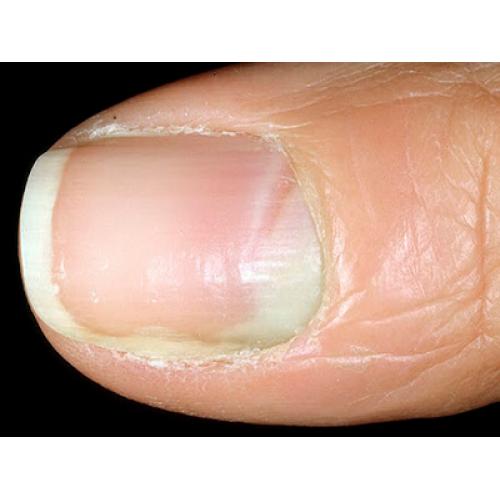
Managing Chronic Paronychia: Long-Term Strategies
Treating chronic paronychia requires a multifaceted approach aimed at addressing the underlying causes and managing symptoms over an extended period.
Avoidance of Triggers and Irritants
A crucial step in managing chronic paronychia is identifying and avoiding potential triggers:
- Minimize water exposure: Use protective gloves when performing wet work
- Avoid nail trauma: Refrain from nail biting, cuticle trimming, and aggressive manicure procedures
- Identify allergens: Consider patch testing to identify potential allergens causing the condition
Topical Treatments for Chronic Paronychia
Topical medications play a significant role in managing chronic paronychia:
- Broad-spectrum antifungal agents: These help combat fungal infections, particularly Candida species
- Topical corticosteroids: These reduce inflammation and alleviate symptoms
- Combination therapies: Some products combine antifungal and corticosteroid medications for enhanced effectiveness
Are topical steroids more effective than systemic antifungals for chronic paronychia? Research indicates that topical steroid creams are indeed more effective than systemic antifungals in treating chronic paronychia. However, the choice of treatment may vary depending on individual cases and the underlying causes of the condition.

Systemic Treatments and Surgical Options
In recalcitrant cases of chronic paronychia, additional interventions may be necessary:
- Oral antifungal medications: These may be prescribed for persistent fungal infections
- Systemic antibiotics: In cases of bacterial superinfection
- Surgical procedures: For severe cases, options include:
- En bloc excision of the proximal nail fold
- Eponychial marsupialization (with or without nail removal)
Preventing Paronychia: Tips for Nail Health
Prevention is key in avoiding both acute and chronic paronychia. By following proper nail care practices, individuals can significantly reduce their risk of developing these infections.
Proper Nail Hygiene
Maintaining good nail hygiene is essential for preventing paronychia:
- Keep nails clean and dry
- Trim nails straight across and avoid cutting too short
- Use a nail file to smooth rough edges
- Avoid biting nails or picking at hangnails
- Moisturize hands and feet regularly to prevent dry, cracked skin
Protecting Nails from Trauma and Moisture
Minimizing exposure to potential irritants and trauma can help prevent paronychia:
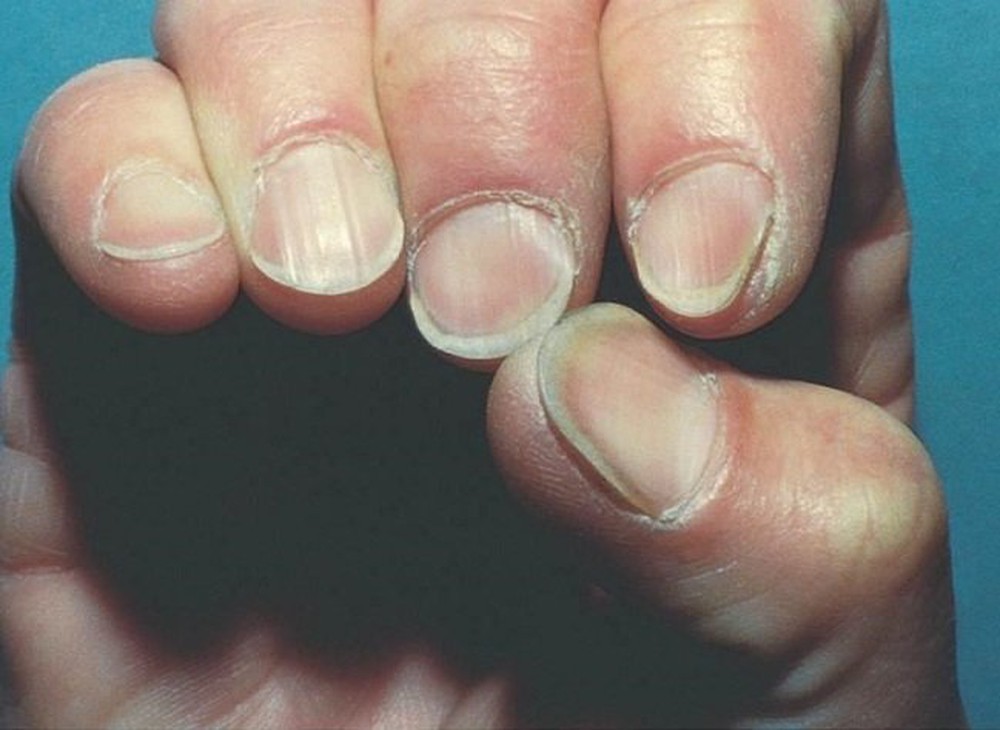
- Wear protective gloves when working with water or chemicals
- Avoid prolonged exposure to moisture
- Use cotton-lined gloves for dry work to absorb sweat
- Be cautious during manicures and pedicures to avoid damaging the cuticles
When to Seek Medical Attention for Paronychia
While mild cases of paronychia can often be managed at home, certain situations warrant professional medical attention.
Red Flags for Acute Paronychia
Seek medical care if you experience any of the following symptoms:
- Severe pain or swelling
- Signs of abscess formation (fluctuance or pus drainage)
- Fever or chills
- Redness or swelling extending beyond the immediate nail area
- No improvement after 2-3 days of home treatment
Indications for Professional Evaluation of Chronic Paronychia
Consider consulting a healthcare provider if:
- Symptoms persist for more than six weeks
- Multiple nails are affected
- There is significant nail deformity or separation from the nail bed
- Home treatments and lifestyle modifications have not been effective
- You have an underlying condition that may complicate treatment (e.g., diabetes, immunosuppression)
Complications and Long-Term Effects of Paronychia
While most cases of paronychia resolve with proper treatment, complications can occur, especially if left untreated or managed incorrectly.

Potential Complications of Acute Paronychia
Untreated or severe cases of acute paronychia may lead to:
- Abscess formation requiring surgical drainage
- Spread of infection to deeper tissues (felon)
- Permanent nail deformity
- Sepsis in rare, severe cases
Long-Term Effects of Chronic Paronychia
Chronic paronychia can have lasting effects on nail health and appearance:
- Persistent nail fold swelling and inflammation
- Irregular or ridged nail growth
- Nail discoloration
- Increased susceptibility to fungal nail infections
- Psychological impact due to cosmetic concerns
Can chronic paronychia lead to permanent nail damage? While most cases of chronic paronychia can be managed effectively, prolonged inflammation and infection can potentially cause permanent changes to the nail structure and appearance. Early and appropriate treatment is crucial to minimize long-term effects.
Paronychia in Special Populations: Considerations and Approaches
Certain groups may be more susceptible to paronychia or require special consideration in their treatment approach.
Paronychia in Diabetic Patients
Individuals with diabetes are at increased risk for nail infections and may experience more severe complications:
- Higher susceptibility to bacterial and fungal infections
- Slower healing due to compromised circulation
- Increased risk of spreading infection
- Need for more aggressive treatment and closer monitoring
Managing Paronychia in Immunocompromised Individuals
Patients with weakened immune systems require special attention:
- Higher risk of developing severe or atypical infections
- Potential for opportunistic pathogens
- Need for early intervention and possibly systemic treatments
- Close collaboration between dermatologists and primary care providers
Pediatric Paronychia: Unique Considerations
Children may develop paronychia due to different factors:
- Thumb-sucking or nail-biting habits
- Difficulty in maintaining proper hand hygiene
- Potential for more rapid spread of infection
- Need for age-appropriate treatment options and patient education
How should paronychia be managed differently in children? Treatment for pediatric paronychia often focuses on conservative measures and may require creative approaches to ensure compliance. Topical treatments are preferred when possible, and any systemic medications must be carefully dosed based on the child’s age and weight.
Acute and Chronic Paronychia | AAFP
DIMITRIS RIGOPOULOS, MD, GEORGE LARIOS, MD, MS, STAMATIS GREGORIOU, MD, AND ALEVIZOS ALEVIZOS, MD
Am Fam Physician. 2008;77(3):339-346
A more recent article on paronychia is available.
Patient information: See related handout on chronic paronychia, written by the authors of this article.
Author disclosure: Nothing to disclose.
Paronychia is an inflammation of the folds of tissue surrounding the nail of a toe or finger. Paronychia may be classified as either acute or chronic. The main factor associated with the development of acute paronychia is direct or indirect trauma to the cuticle or nail fold. This enables pathogens to inoculate the nail, resulting in infection. Treatment options for acute paronychia include warm compresses; topical antibiotics, with or without corticosteroids; oral antibiotics; or surgical incision and drainage for more severe cases. Chronic paronychia is a multifactorial inflammatory reaction of the proximal nail fold to irritants and allergens. The patient should avoid exposure to contact irritants; treatment of underlying inflammation and infection is recommended, using a combination of a broad-spectrum topical antifungal agent and a corticosteroid. Application of emollient lotions may be beneficial. Topical steroid creams are more effective than systemic antifungals in the treatment of chronic paronychia. In recalcitrant chronic paronychia, en bloc excision of the proximal nail fold is an option. Alternatively, an eponychial marsupialization, with or without nail removal, may be performed.
This enables pathogens to inoculate the nail, resulting in infection. Treatment options for acute paronychia include warm compresses; topical antibiotics, with or without corticosteroids; oral antibiotics; or surgical incision and drainage for more severe cases. Chronic paronychia is a multifactorial inflammatory reaction of the proximal nail fold to irritants and allergens. The patient should avoid exposure to contact irritants; treatment of underlying inflammation and infection is recommended, using a combination of a broad-spectrum topical antifungal agent and a corticosteroid. Application of emollient lotions may be beneficial. Topical steroid creams are more effective than systemic antifungals in the treatment of chronic paronychia. In recalcitrant chronic paronychia, en bloc excision of the proximal nail fold is an option. Alternatively, an eponychial marsupialization, with or without nail removal, may be performed.
Paronychia (synonymous with perionychia) is an inflammatory reaction involving the folds of tissue surrounding a fingernail or toenail.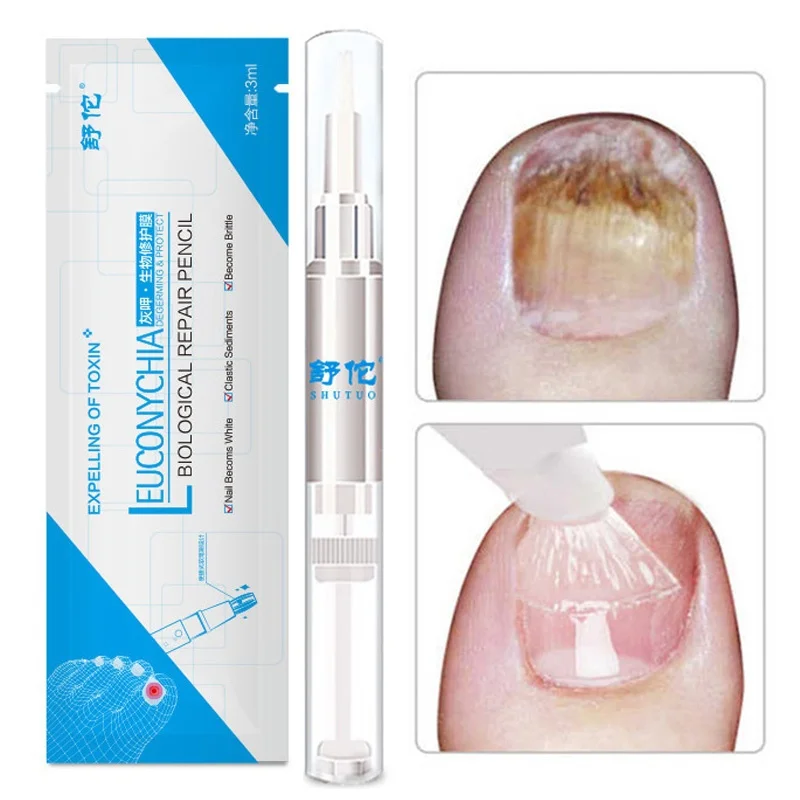 The condition is the result of infection and may be classified as acute or chronic. This article discusses the etiology, predisposing factors, clinical manifestation, diagnosis, and treatment of acute and chronic paronychia.
The condition is the result of infection and may be classified as acute or chronic. This article discusses the etiology, predisposing factors, clinical manifestation, diagnosis, and treatment of acute and chronic paronychia.
| Clinical recommendation | Evidence rating | References |
|---|---|---|
| The digital pressure test may be helpful in the early stages of paronychial infection when there is doubt about the presence or extent of an abscess. | C | 14 |
| There is no evidence that treatment with oral antibiotics is any better or worse than incision and drainage for acute paronychia. | C | 23 |
| Topical steroids are more effective than systemic antifungals in the treatment of chronic paronychia. | B | 21 |
Patients with simple chronic paronychia should be treated with a broad-spectrum topical antifungal agent and should be instructed to avoid contact irritants. | C | 22 |
Nail Structure and Function
The nail is a complex unit composed of five major modified cutaneous structures: the nail matrix, nail plate, nail bed, cuticle (eponychium), and nail folds1(Figure 1). The cuticle is an outgrowth of the proximal fold and is situated between the skin of the digit and the nail plate, fusing these structures together.2 This configuration provides a waterproof seal from external irritants, allergens, and pathogens.
Acute Paronychia
ETIOLOGY AND PREDISPOSING FACTORS
The most common cause of acute paronychia is direct or indirect trauma to the cuticle or nail fold. Such trauma may be relatively minor, resulting from ordinary events, such as dishwashing, an injury from a splinter or thorn, onychophagia (nail biting), biting or picking at a hangnail, finger sucking, an ingrown nail, manicure procedures (trimming or pushing back the cuticles), artificial nail application, or other nail manipulation. 3–5 Such trauma enables bacterial inoculation of the nail and subsequent infection. The most common causative pathogen is Staphylococcus aureus, although Streptococcus pyogenes, Pseudomonas pyocyanea, and Proteus vulgaris can also cause paronychia.3,6,7 In patients with exposure to oral flora, other anaerobic gram-negative bacteria may also be involved. Acute paronychia can also develop as a complication of chronic paronychia.8 Rarely, acute paronychia occurs as a manifestation of other disorders affecting the digits, such as pemphigus vulgaris.9
3–5 Such trauma enables bacterial inoculation of the nail and subsequent infection. The most common causative pathogen is Staphylococcus aureus, although Streptococcus pyogenes, Pseudomonas pyocyanea, and Proteus vulgaris can also cause paronychia.3,6,7 In patients with exposure to oral flora, other anaerobic gram-negative bacteria may also be involved. Acute paronychia can also develop as a complication of chronic paronychia.8 Rarely, acute paronychia occurs as a manifestation of other disorders affecting the digits, such as pemphigus vulgaris.9
CLINICAL MANIFESTATIONS
In patients with acute paronychia, only one nail is typically involved.10 The condition is characterized by rapid onset of erythema, edema, and discomfort or tenderness of the proximal and lateral nail folds,11 usually two to five days after the trauma. Patients with paronychia may initially present with only superficial infection and accumulation of purulent material under the nail fold, as indicated by drainage of pus when the nail fold is compressed12,13(Figure 2). An untreated infection may evolve into a subungual abscess, with pain and inflammation of the nail matrix.11 As a consequence, transient or permanent dystrophy of the nail plate may occur.10 Pus formation can proximally separate the nail from its underlying attachment, causing elevation of the nail plate.10,11 Recurrent acute paronychia may evolve into chronic paronychia.7,12
An untreated infection may evolve into a subungual abscess, with pain and inflammation of the nail matrix.11 As a consequence, transient or permanent dystrophy of the nail plate may occur.10 Pus formation can proximally separate the nail from its underlying attachment, causing elevation of the nail plate.10,11 Recurrent acute paronychia may evolve into chronic paronychia.7,12
DIAGNOSIS
The diagnosis of acute paronychia is based on a history of minor trauma and findings on physical examination of nail folds. The digital pressure test may be helpful in the early stages of infection when there is doubt about the presence or extent of an abscess.14 The test is performed by having the patient oppose the thumb and affected finger, thereby applying light pressure to the distal volar aspect of the affected digit. The increase in pressure within the nail fold (particularly in the abscess cavity) causes blanching of the overlying skin and clear demarcation of the abscess. In patients with severe infection or abscess, a specimen should be obtained to identify the responsible pathogen and to rule out methicillin-resistant S. aureus (MRSA) infection.13
In patients with severe infection or abscess, a specimen should be obtained to identify the responsible pathogen and to rule out methicillin-resistant S. aureus (MRSA) infection.13
DIFFERENTIAL DIAGNOSIS
Psoriasis and Reiter syndrome may also involve the proximal nail fold and can mimic acute paronychia.10 Recurrent acute paronychia should raise suspicion for herpetic whitlow, which typically occurs in health care professionals as a result of topical inoculation.12 This condition may also affect apparently healthy children after a primary oral herpes infection. Herpetic whitlow appears as single or grouped blisters with a honeycomb appearance close to the nail.8 Diagnosis can be confirmed by Tzanck testing or viral culture. Incision and drainage is contraindicated in patients with herpetic whitlow. Suppressive therapy with a seven-to 10-day course of acyclovir 5% ointment or cream (Zovirax) or an oral antiviral agent such as acyclovir, famciclovir (Famvir), or valacyclovir (Valtrex) has been proposed, but evidence from clinical trials is lacking. 15
15
MEDICAL TREATMENT
Treatment of acute paronychia is determined by the degree of inflammation.12 If an abscess has not formed, the use of warm water compresses and soaking the affected digit in Burow’s solution (i.e., aluminum acetate)10 or vinegar may be effective.5,11 Acetaminophen or a nonsteroidal anti-inflammatory drug should be considered for symptomatic relief. Mild cases may be treated with an antibiotic cream (e.g., mupirocin [Bactroban], gentamicin, bacitracin/neomycin/polymyxin B [Neosporin]) alone or in combination with a topical corticosteroid. The combination of topical antibiotic and corticosteroid such as betamethasone (Diprolene) is safe and effective for treatment of uncomplicated acute bacterial paronychia and seems to offer advantages compared with topical antibiotics alone.7
For persistent lesions, oral antistaphylococcal antibiotic therapy should be used in conjunction with warm soaks.11,16,17 Patients with exposure to oral flora via finger sucking or hangnail biting should be treated against anaerobes with a broad-spectrum oral antibiotic (e.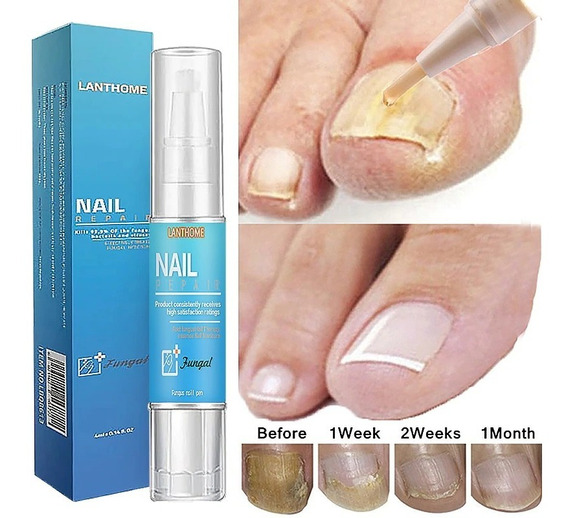 g., amoxicillin/clavulanate [Augmentin], clindamycin [Cleocin]) because of possible S. aureus and Bacteroides resistance to penicillin and ampicillin.3,11,17,18 Medications commonly used in the treatment of acute paronychia are listed in Table 1.3,10–13,17–22
g., amoxicillin/clavulanate [Augmentin], clindamycin [Cleocin]) because of possible S. aureus and Bacteroides resistance to penicillin and ampicillin.3,11,17,18 Medications commonly used in the treatment of acute paronychia are listed in Table 1.3,10–13,17–22
| Drug | Typical dosage | Comments | ||
|---|---|---|---|---|
| Antibiotics (oral) | ||||
| Amoxicillin/clavulanate (Augmentin)* | 500 mg/125 mg orally three times daily for seven days | Dosage adjustment may be necessary in patients with renal impairment; cross-sensitivity documented with cephalosporins; diarrhea may occur | ||
| or | ||||
| 875 mg/125 mg orally twice daily for seven days | ||||
| Clindamycin (Cleocin)* | 150 to 450 mg orally three or four times daily (not to exceed 1. 8 g daily) for seven days 8 g daily) for seven days | Adjust dosage in patients with severe hepatic dysfunction; associated with severe and possibly fatal colitis; inform patient to report severe diarrhea immediately | ||
| Trimethoprim/sulfamethoxazole (TMP/SMX; Bactrim, Septra)* | 160 mg/800 mg orally twice daily for seven days | High doses may cause bone marrow depression; discontinue therapy if significant hematologic changes occur; caution in folate or glucose-6-phosphate dehydrogenase deficiency | ||
| Antibiotics (topical) | ||||
| Bacitracin/neomycin/polymyxin B ointment (Neosporin) | Three times daily for five to 10 days | Overgrowth of nonsusceptible organisms with prolonged use | ||
| Gentamicin ointment | Three or four times daily for five to 10 days | — | ||
| Mupirocin ointment (Bactroban) | Two to four times daily for five to 10 days | Avoid contact with eyes; may irritate mucous membranes; resistance may result with prolonged use | ||
| Antifungal agents (oral) | ||||
| Fluconazole (Diflucan) | 100 mg orally once daily for seven to 14 days | Hepatotoxicity and QT prolongation may occur | ||
| Itraconazole (Sporanox) | 200 mg orally twice daily for seven days | Antacids may reduce absorption; edema may occur with coadministration of calcium channel blockers; rhabdomyolysis may occur with coadministration of statins; inhibition of cytochrome P450 hepatic enzymes may cause increased levels of many drugs | ||
| Nystatin (Mycostatin) 200,000-unit pastilles | One or two pastilles four times daily for seven to 14 days | Adverse effects include nausea, vomiting, and diarrhea | ||
| Antifungal agents (topical) | ||||
| Ciclopirox topical suspension (Loprox TS) | Twice daily until clinical resolution (one month maximum) | Avoid contact with eyes and mucous membranes | ||
| Clotrimazole cream (Lotrimin) | Three times daily until clinical resolution (one month maximum) | Avoid contact with eyes; if irritation or sensitivity develops, discontinue use and begin appropriate therapy | ||
| Econazole cream (Spectazole) | Three or four times daily until clinical resolution (one month maximum) | Avoid contact with eyes; if irritation or sensitivity develops, discontinue use and begin appropriate therapy | ||
| Ketoconazole cream (Nizoral; brand no longer available in the United States) | Once or twice daily until clinical resolution (one month maximum) | Avoid contact with eyes; if irritation or sensitivity develops, discontinue use and begin appropriate therapy | ||
| Nystatin cream | Three times daily until clinical resolution (one month maximum) | Avoid contact with eyes; if irritation or sensitivity develops, discontinue use and begin appropriate therapy | ||
| Antiviral agents for herpetic whitlow | ||||
| Acyclovir (Zovirax) † | 200 mg orally five times daily for 10 days | Nausea, vomiting, rash, deposition in renal tubules, and central nervous system symptoms may occur | ||
| Famciclovir (Famvir)† | 250 mg orally twice daily for 10 days | Dosage adjustment recommended in patients with renal impairment | ||
| Valacyclovir (Valtrex)† | 500 mg orally twice daily for 10 days | Associated with onset of hemolytic uremic syndrome | ||
| Corticosteroids (topical) | ||||
Betamethasone 0. 05% cream (Diprolene) 05% cream (Diprolene) | Twice daily for one to two weeks | If infection develops and is not responsive to antibiotic treatment, discontinue use until infection is controlled | ||
| Betamethasone valerate 0.1% solution or lotion (Beta-Val) | Once or twice daily for one to two weeks | Prolonged therapy over large body surface areas may suppress adrenal function; if infection develops, discontinue use until infection is controlled | ||
| Combination antifungal agent and corticosteroid | ||||
| Nystatin and triamcinolone cream (Mytrex; brand no longer available in the United States) | Two or three times daily until the cuticle has regrown | Check precautions for both components | ||
SURGICAL TREATMENT
Although surgical intervention for paronychia is generally recommended when an abscess is present, no studies have compared the use of oral antibiotics with incision and drainage. 23 Superficial infections can be easily drained with a size 11 scalpel or a comedone extractor.12 Pain is quickly relieved after drainage.17 Another simple technique to drain a paronychial abscess involves lifting the nail fold with the tip of a 21- or 23-gauge needle, followed immediately by passive oozing of pus from the nail bed; this technique does not require anesthesia or daily dressing.24 If there is no clear response within two days, deep surgical incision under local anesthesia (digital nerve block) may be needed, particularly in children.8,10,11 The proximal one third of the nail plate can be removed without initial incisional drainage. This technique gives more rapid relief and more sustained drainage, especially in patients with paronychia resulting from an ingrown nail.8,17,19 Complicated infections can occur in immunosuppressed patients and in patients with diabetes or untreated infections.11,16 Preventive measures for acute paronychia are described in Table 2.
23 Superficial infections can be easily drained with a size 11 scalpel or a comedone extractor.12 Pain is quickly relieved after drainage.17 Another simple technique to drain a paronychial abscess involves lifting the nail fold with the tip of a 21- or 23-gauge needle, followed immediately by passive oozing of pus from the nail bed; this technique does not require anesthesia or daily dressing.24 If there is no clear response within two days, deep surgical incision under local anesthesia (digital nerve block) may be needed, particularly in children.8,10,11 The proximal one third of the nail plate can be removed without initial incisional drainage. This technique gives more rapid relief and more sustained drainage, especially in patients with paronychia resulting from an ingrown nail.8,17,19 Complicated infections can occur in immunosuppressed patients and in patients with diabetes or untreated infections.11,16 Preventive measures for acute paronychia are described in Table 2.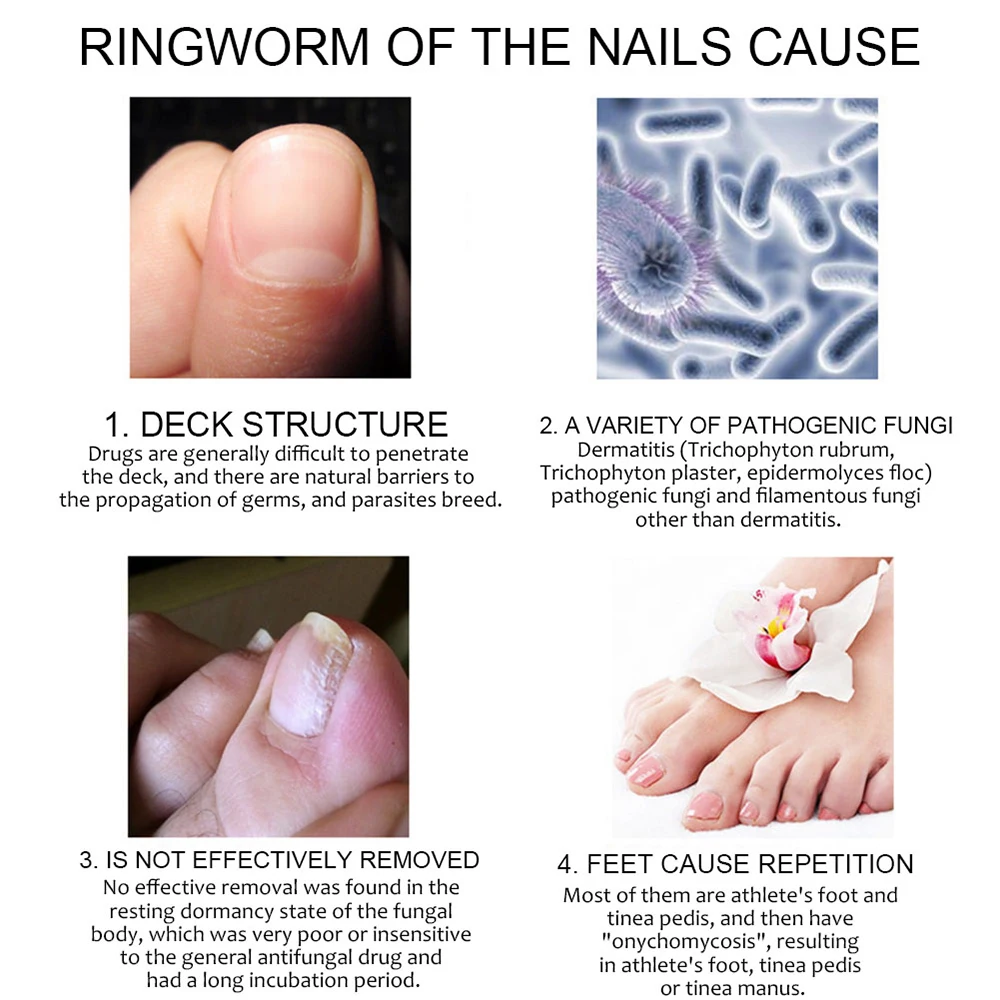 3,10,13,19,20
3,10,13,19,20
| Paronychia type | Recommendation |
|---|---|
| All | Avoid trimming cuticles or using cuticle removers |
| Improve glycemic control in patients with diabetes | |
| Provide adequate patient education | |
| Acute | Avoid nail trauma, biting, picking, and manipulation, and finger sucking |
| Keep affected areas clean and dry | |
| Chronic | Apply moisturizing lotion after hand washing |
| Avoid chronic prolonged exposure to contact irritants and moisture (including detergent and soap) | |
| Avoid finger sucking | |
| Keep nails short | |
| Use rubber gloves, preferably with inner cotton glove or cotton liners |
Chronic Paronychia
ETIOLOGY AND PREDISPOSING FACTORS
Chronic paronychia is a multifactorial inflammatory reaction of the proximal nail fold to irritants and allergens. 12,19–21 This disorder can be the result of numerous conditions, such as dish washing, finger sucking, aggressively trimming the cuticles, and frequent contact with chemicals (e.g., mild alkalis, acids).
12,19–21 This disorder can be the result of numerous conditions, such as dish washing, finger sucking, aggressively trimming the cuticles, and frequent contact with chemicals (e.g., mild alkalis, acids).
In chronic paronychia, the cuticle separates from the nail plate, leaving the region between the proximal nail fold and the nail plate vulnerable to infection by bacterial and fungal pathogens.12,21 Chronic paronychia has been reported in laundry workers, house and office cleaners, food handlers, cooks, dishwashers, bartenders, chefs, fishmongers, confectioners, nurses, and swimmers. In such cases, colonization with Candida albicans or bacteria may occur in the lesion.19,21
There is some disagreement about the importance and role of Candida in chronic paronychia.10,21 Although Candida is often isolated in patients with chronic paronychia, this condition is not a type of onychomycosis, but rather a variety of hand dermatitis21 caused by environmental exposure (Figure 3). In many cases, Candida disappears when the physiologic barrier is restored.12
In many cases, Candida disappears when the physiologic barrier is restored.12
Chronic paronychia can result as a complication of acute paronychia20 in patients who do not receive appropriate treatment.7 Chronic paronychia often occurs in persons with diabetes.3 The use of systemic drugs, such as retinoids and protease inhibitors (e.g., indinavir [Crixivan], lamivudine [Epivir]), may cause chronic paronychia. Indinavir is the most common cause of chronic or recurrent paronychia of the toes or fingers in persons infected with human immunodeficiency virus. The mechanism of indinavir-induced retinoid-like effects is unclear.25,26 Paronychia has also been reported in patients taking cetuximab (Erbitux), an anti-epidermal growth factor receptor (EGFR) antibody used in the treatment of solid tumors.27,28
DIAGNOSIS
Diagnosis of chronic paronychia is based on physical examination of the nail folds and a history of continuous immersion of hands in water10; contact with soap, detergents, or other chemicals; or systemic drug use (retinoids, antiretroviral agents, anti-EGFR antibodies). Clinical manifestations are similar to those of acute paronychia: erythema, tenderness, and swelling, with retraction of the proximal nail fold and absence of the adjacent cuticle. Pus may form below the nail fold.8 One or several fingernails are usually affected, typically the thumb and second or third fingers of the dominant hand.13 The nail plate becomes thickened and discolored, with pronounced transverse ridges such as Beau’s lines (resulting from inflammation of the nail matrix), and nail loss8,10,13(Figure 4). Chronic paronychia generally has been present for at least six weeks at the time of diagnosis.10,12 The condition usually has a prolonged course with recurrent, self-limited episodes of acute exacerbation.13
Clinical manifestations are similar to those of acute paronychia: erythema, tenderness, and swelling, with retraction of the proximal nail fold and absence of the adjacent cuticle. Pus may form below the nail fold.8 One or several fingernails are usually affected, typically the thumb and second or third fingers of the dominant hand.13 The nail plate becomes thickened and discolored, with pronounced transverse ridges such as Beau’s lines (resulting from inflammation of the nail matrix), and nail loss8,10,13(Figure 4). Chronic paronychia generally has been present for at least six weeks at the time of diagnosis.10,12 The condition usually has a prolonged course with recurrent, self-limited episodes of acute exacerbation.13
DIFFERENTIAL DIAGNOSIS
Other entities affecting the fingertip, such as squamous cell carcinoma of the nail29,30(Figure 5), malignant melanoma, and metastases from malignant tumors,31 may mimic paronychia.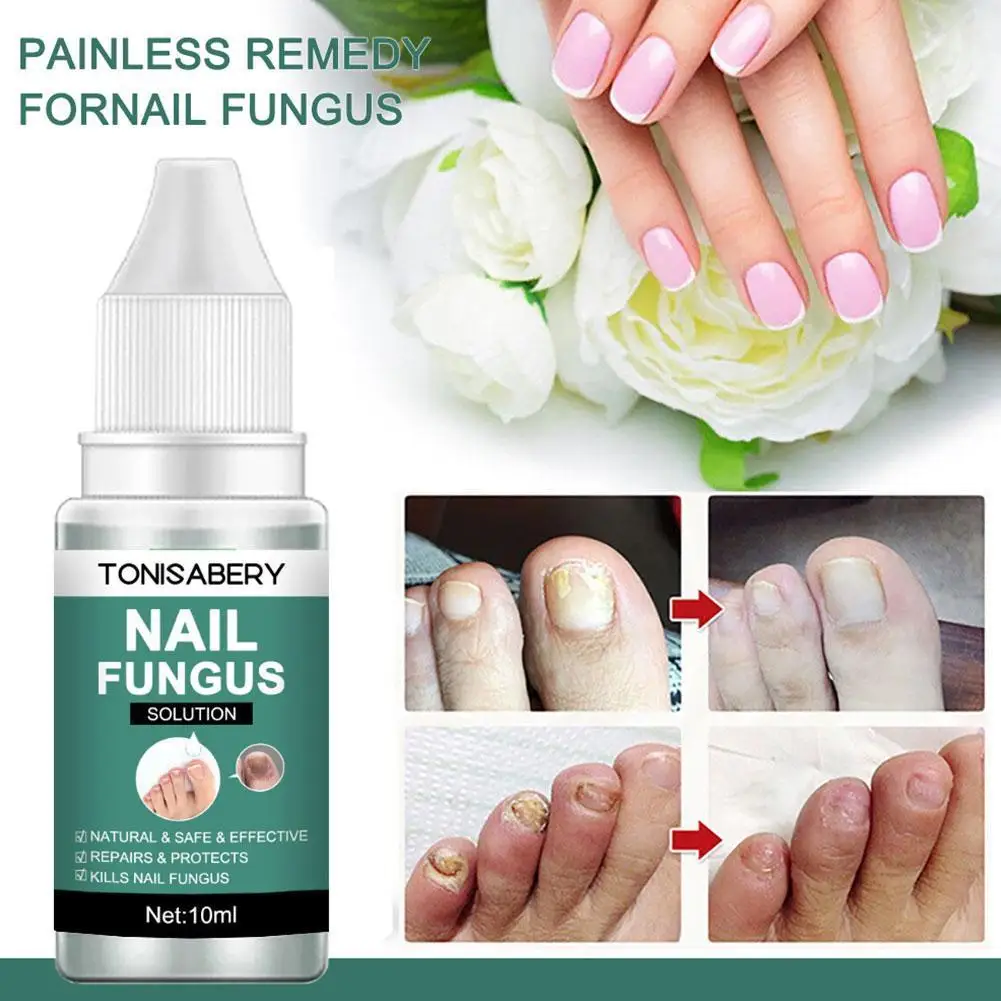 Physicians should consider the possibility of carcinoma when a chronic inflammatory process is unresponsive to treatment.30 Any suspicion for the aforementioned entities should prompt biopsy. Several diseases affecting the digits, such as eczema, psoriasis, and Reiter syndrome, may involve the nail folds.10
Physicians should consider the possibility of carcinoma when a chronic inflammatory process is unresponsive to treatment.30 Any suspicion for the aforementioned entities should prompt biopsy. Several diseases affecting the digits, such as eczema, psoriasis, and Reiter syndrome, may involve the nail folds.10
TREATMENT
Treatment of chronic paronychia includes avoiding exposure to contact irritants and appropriate management of underlying inflammation or infection.12,20 A broad-spectrum topical antifungal agent can be used to treat the condition and prevent recurrence.22 Application of emollient lotions to lubricate the nascent cuticle and the hands is usually beneficial. One randomized controlled trial assigned 45 adults with chronic paronychia to treatment with a systemic antifungal agent (itraconazole [Sporanox] or terbinafine [Lamisil]) or a topical steroid cream (methylprednisolone aceponate [Advantan, not available in the United States]) for three weeks. 21 After nine weeks, more patients in the topical steroid group were improved or cured (91 versus 49 percent; P < .01; number needed to treat = 2.4).
21 After nine weeks, more patients in the topical steroid group were improved or cured (91 versus 49 percent; P < .01; number needed to treat = 2.4).
The presence or absence of Candida seems to be unrelated to the effectiveness of treatment. Given their lower risks and costs compared with systemic antifungals, topical steroids should be the first-line treatment for patients with chronic paronychia.21 Alternatively, topical treatment with a combination of steroid and antifungal agents may also be used in patients with simple chronic paronychia, although data showing the superiority of this treatment to steroid use alone are lacking.19 Intralesional corticosteroid administration (triamcinolone [Amcort]) may be used in refractory cases.8,19 Systemic corticosteroids may be used for treatment of inflammation and pain for a limited period in patients with severe paronychia involving several fingernails.
If patients with chronic paronychia do not respond to topical therapy and avoidance of contact with water and irritants, a trial of systemic antifungals may be useful before attempting invasive approaches. Commonly used medications for chronic paronychia are listed in Table 1.3,10–13,17–22
Commonly used medications for chronic paronychia are listed in Table 1.3,10–13,17–22
In patients with recalcitrant chronic paronychia, en bloc excision of the proximal nail fold is effective. Simultaneous avulsion of the nail plate (total or partial, restricted to the base of the nail plate) improves surgical outcomes.8,32 Alternatively, an eponychial marsupialization, with or without nail removal, may be performed.33 This technique involves excision of a semicircular skin section proximal to the nail fold and parallel to the eponychium, expanding to the edge of the nail fold on both sides.33 Paronychia induced by the EGFR inhibitor cetuximab can be treated with an antibiotic such as doxycycline (Vibramycin).28 In patients with paronychia induced by indinavir, substitution of an alternative antiretroviral regimen that retains lamivudine and other protease inhibitors can resolve retinoid-like manifestations without recurrences.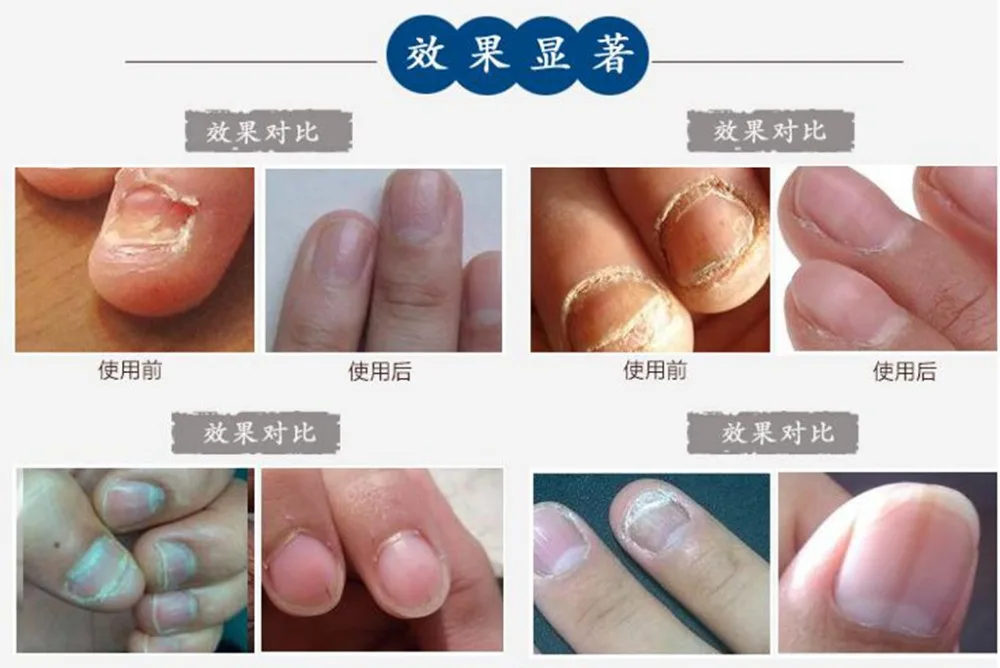 25
25
Preventive measures for chronic paronychia are described in Table 2.3,10,13,19,20
PROGNOSIS
Chronic paronychia responds slowly to treatment. Resolution usually takes several weeks or months, but the slow improvement rate should not discourage physicians and patients. In mild to moderate cases, nine weeks of drug treatment usually is effective. In recalcitrant cases, en bloc excision of the proximal nail fold with nail avulsion may result in significant cure rates. Successful treatment outcomes also depend on preventive measures taken by the patient (e.g., having a water barrier in the nail fold). If the patient is not treated, sporadic, self-limiting, painful episodes of acute inflammation should be expected as the result of continuous penetration of various pathogens.
Causes and treatment of an infected nail
Paronychia is a bacterial or fungal skin infection that develops around the nail. Home remedies include soaking in warm water and applying lemon and salt. In some cases, medical treatment may be necessary.
Home remedies include soaking in warm water and applying lemon and salt. In some cases, medical treatment may be necessary.
Paronychia can result from biting or chewing the nails, but it is more common when working conditions require the hands to be frequently wet or exposed to chemicals.
Most cases of paronychia are not serious, and there are several effective treatments. This article will discuss the causes and treatments of this infection.
Paronychia is an infection of the surrounding tissue where the nail meets the skin. Onychia is an infection of the nail itself, which causes inflammation of the nail and swelling of the surrounding tissue.
Doctors may also refer to paronychia as candidal paronychias. There is usually a disruption in the barrier between the nail plate and nail fold. This results in infection from the yeast Candida albicans.
Both paronychia and an ingrown toenail can cause pain in the toe area. While they can occur at the same time, they are two distinct issues.
An ingrown toenail is when the nail plate grows into the surrounding skin, causing inflammation and infection. It can cause pain and discomfort, especially if left untreated.
Because the nail breaks the skin, it frequently causes infections, including paronychia.
Ingrown toenails may result from:
- improper nail cutting
- poor foot hygiene
- wearing shoes that are too small and cause pressure on the corners of the toenail
- foot injury
- medications that affect the skin
Some symptoms of paronychia resemble those of different skin infections. Other symptoms directly affect the nail itself.
Paronychia symptoms include:
- swelling, tenderness, and redness around the nail
- pus-filled abscesses
- hardening of the nail
- deformation or damage to the nail
- separation of the nail from the nailbed
Paronychia occurs when the skin around the nail becomes damaged, allowing germs to enter.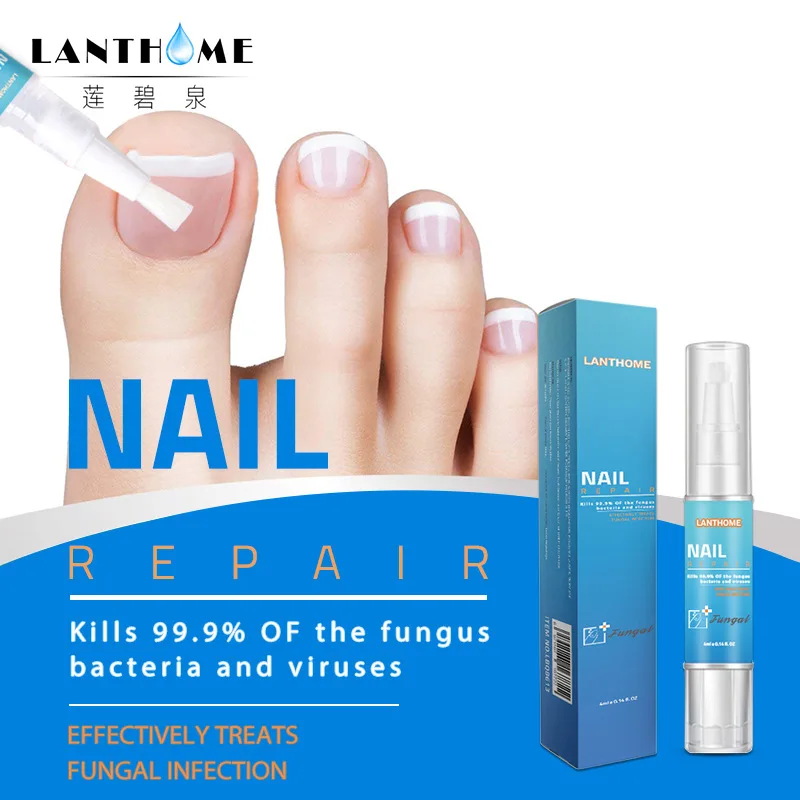
Bacteria or fungi can cause the infection, such as Staphylococcus aureus and Streptococcus pyogenes bacteria.
Common causes of skin damage around the nail include:
- biting or chewing the nails
- picking at nails
- manicures
- excessive exposure of the hands to moisture, including frequently sucking the finger
- ingrown nails
Doctors diagnose paronychia by identifying the type of bacteria or fungi causing the infection.
They will obtain a clipping of the nail or take a swab of the infected area and test for the presence of specific bacteria or fungi. Having done this, they can make a diagnosis.
Treatments for paronychia will vary according to the severity and whether it is acute or chronic. Both at-home treatments and medical treatments may help, depending on the diagnosis and severity of the condition.
At-home treatment
A person with mild, acute paronychia can try soaking the affected finger or toe in warm water several times a day.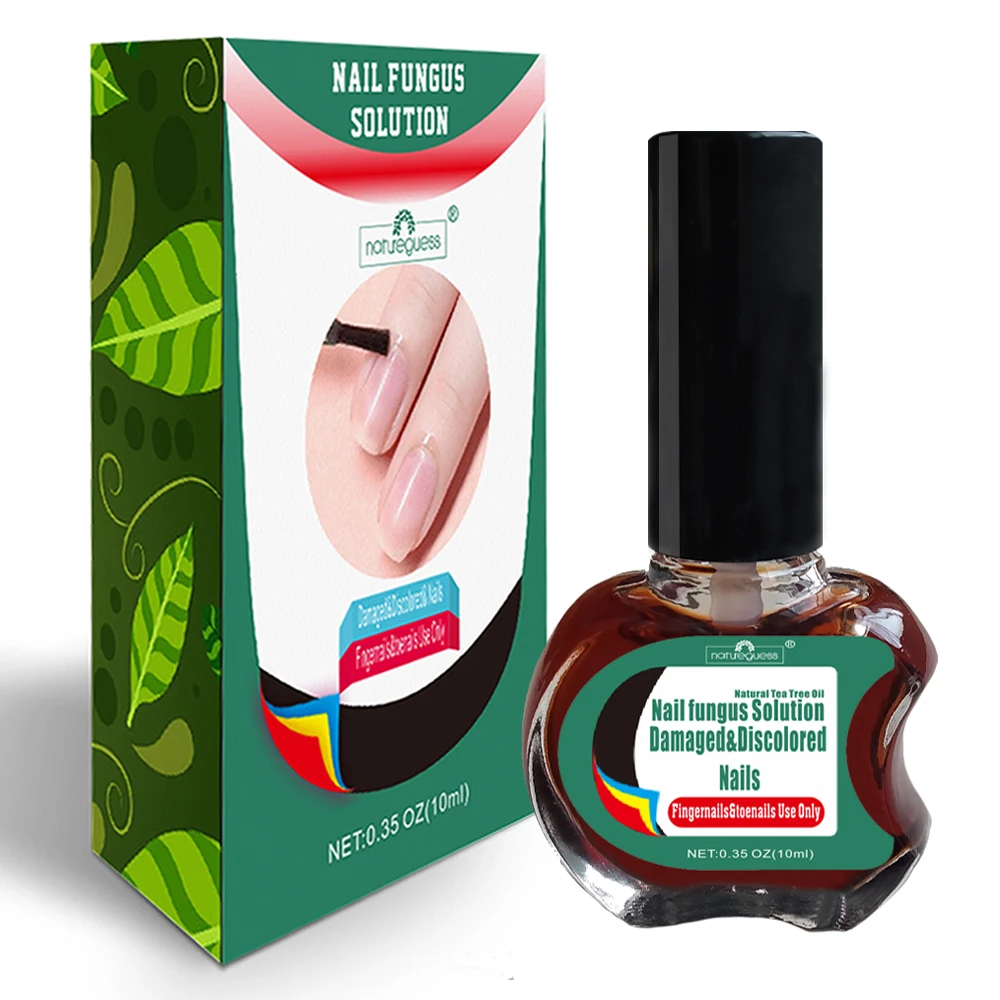 If symptoms do not improve, they should seek further treatment.
If symptoms do not improve, they should seek further treatment.
Mild paronychia may be treatable with just a lemon and salt.
Individuals claim that a person can cure the infection by cutting a slit in a lemon and sprinkling salt into the hole before placing the affected finger in the lemon for a few minutes. They advise repeating this until the infection goes away. However, there seems to be no scientific evidence to support the idea that this can cure paronychia.
Another home remedy is applying magnesium sulfate paste to the infected area. Individuals claim that this helps with pain management and can ward off the infection. However, there doesn’t appear to be scientific evidence to support this claim either.
Chronic paronychia may require weeks or months of treatment. It is important to keep the hands dry and clean throughout. If a person’s job requires their hands to be wet or exposed to germs, they may need to take time off.
Medical treatment
When a bacterial infection causes acute paronychia, a doctor may recommend an antibiotic, such as dicloxacillin or clindamycin.
If a fungal infection causes chronic paronychia, a doctor will prescribe antifungal medication. These topical medications typically include clotrimazole or ketoconazole.
A doctor may also need to drain any pus from surrounding abscesses. To do this, they perform a procedure referred to as the incision and drainage method. They will provide a local anesthetic, then open the nail fold enough to insert gauze to help drain the pus.
Because many at-home remedies lack scientific support, it is best to consult a medical professional for guidance if you think you have paronychia or another type of toe or toenail infection.
People can treat paronychia at home by minimizing germ exposure and frequently washing the infected area. However, they should only do this if symptoms are mild and the infection has not spread beyond the fingernail.
If symptoms do not improve after a few days or the infection has spread further than the nail, it is important to speak with a doctor.
For severe symptoms, contact a doctor immediately.
People can reduce their risk of developing nail infections by:
- moisturizing after washing the hands
- avoiding biting or chewing the nails
- taking care when cutting the nails
- keeping the hands and nails clean
- avoiding submerging the hands in water for long periods
- avoiding contact with irritants
- keeping the nails short
Some people have a higher risk of developing paronychia, such as:
- people with jobs that require them to have wet hands frequently, including cleaners, fishers, dairy farmers, and bartenders
- people with poor circulation
- people with diabetes
- people with other skin conditions, such as dermatitis
- people with weakened immune systems
In most cases, a doctor can easily diagnose paronychia with a physical examination. They will also consider a person’s medical history and look for risk factors, such as diabetes.
In some cases, a doctor may require a sample of any pus that is present. They can send this to a laboratory for analysis to check whether bacteria or fungi are causing the infection.
Paronychia is a skin infection around a fingernail or toenail. Symptoms include inflammation, swelling, pain, and discomfort. Biting or chewing the nails is a common cause.
Acute paronychia develops quickly and treatment can reduce symptoms rapidly. People can treat mild cases at home. Chronic paronychia has a slower onset, and it can take weeks for treatment to effectively reduce symptoms.
Taking good care of the hands and nails is the best way to prevent paronychia.
90,000 inflammation of the periungual ridge. treatment in Sumy
Mon.-Fri. 09:00 – 17:00
Sat. 09:00 – 15:00
Ave. M.Lushpy 31A
Sumy
Choose a languageRusUkr
Paronychia is a purulent inflammation of the periungual fold and tissues at the base and sides of the nail. The main reason is infection under the skin as a result of trauma, prolonged exposure to chemicals, or non-compliance with personal hygiene. Also, complications of certain skin, infectious or endocrinological diseases can become the cause of paronychia.
The main reason is infection under the skin as a result of trauma, prolonged exposure to chemicals, or non-compliance with personal hygiene. Also, complications of certain skin, infectious or endocrinological diseases can become the cause of paronychia.
There are several forms of paronychia:
- Tourniolus is the most common form of the disease, characterized by gradually increasing suppuration and an increase in painful symptoms. The form is characteristic of infectious paronychia caused by fungi of the genus Candida or streptococcal infection.
- Erosive and ulcerative forms – develop with syphilis, pemphigus, Duhring’s disease. They are characterized by the appearance of vesicles and ulcers on the skin around the nail, from which “ichor” or pus periodically seeps out. The pathological process often passes to the nail.
- Chronic paronychia is a long-term inflammatory process in which the cuticle may be completely absent, and the nail plate is often thickened or deformed.
 Chronic paronychia may result from prolonged exposure to chemicals.
Chronic paronychia may result from prolonged exposure to chemicals.
Description and symptoms of paronychia
Paronychia begins with swelling and redness of the periungual fold. There is pain and a local increase in temperature. After a while, an abscess and accumulation of pus form.
Further course of the disease leads to spontaneous outpouring of pus from under the nail fold or under the nail plate. In the second case, the nail acquires a yellowish-green color. In some cases, the periungual roller is covered with whitish scales or crusts, ulcers or vesicles.
If left untreated, the disease becomes chronic, in which the nail thickens and deforms. There is a risk of complete loss of the nail plate. Also, the lack of treatment can be fraught with complications such as phlegmon, abscess, tissue necrosis, infection of the tendons, sepsis.
Diagnosis and treatment of paronychia
Only a surgeon can diagnose the disease. In most cases, a simple examination is enough to make a diagnosis. But in order to determine the cause of the disease, it may be necessary to conduct a general blood test, a blood test for sugar and a Wasserman reaction. To exclude a fungal infection, a biopsy of the nail plate is necessary (if the pathological process has affected not only the periungual tissues, but also the nail itself).
In most cases, a simple examination is enough to make a diagnosis. But in order to determine the cause of the disease, it may be necessary to conduct a general blood test, a blood test for sugar and a Wasserman reaction. To exclude a fungal infection, a biopsy of the nail plate is necessary (if the pathological process has affected not only the periungual tissues, but also the nail itself).
Because different causes and forms of paronychia require different treatments, it is recommended that you see a doctor as soon as the first symptoms appear. If treatment is started during the first 3 days from the onset of the disease, it is often possible to do without surgical intervention, using conservative therapy methods.
In case of suppuration, the abscess will need to be opened and drained using outpatient surgery methods. In the clinic of VERBA MEDICAL LLC, this is a minimally invasive operation, using modern ultrasound equipment. The operation can be performed immediately after the diagnosis is confirmed.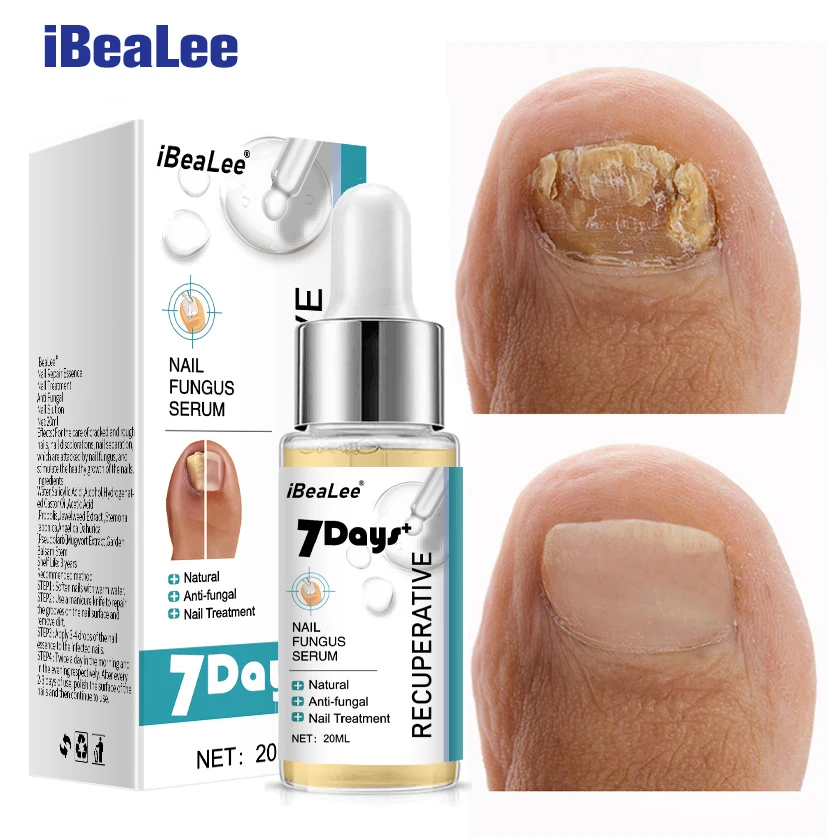 The next day the patient can return to normal life. But a full recovery can take up to 3 weeks, depending on the causes and degree of the disease, during which observation by a surgeon is required.
The next day the patient can return to normal life. But a full recovery can take up to 3 weeks, depending on the causes and degree of the disease, during which observation by a surgeon is required.
To prevent serious complications, make an appointment with the surgeon of the clinic LLC “verba medical” Solodovnik A.V. or Chumak S.A. at the first signs of inflammation or swelling of the periungual tissues.
Paronychia. What is Paronychia?
IMPORTANT
The information in this section should not be used for self-diagnosis or self-treatment. In case of pain or other exacerbation of the disease, only the attending physician should prescribe diagnostic tests. For diagnosis and proper treatment, you should contact your doctor.
Paronychia is a dermatological disease with inflammation of the periungual fold caused by trauma, exposure to chemicals or high temperature, followed by infection. Symptoms of this condition are redness, swelling and soreness in the area of the roller, possibly with the development of suppuration and abscess.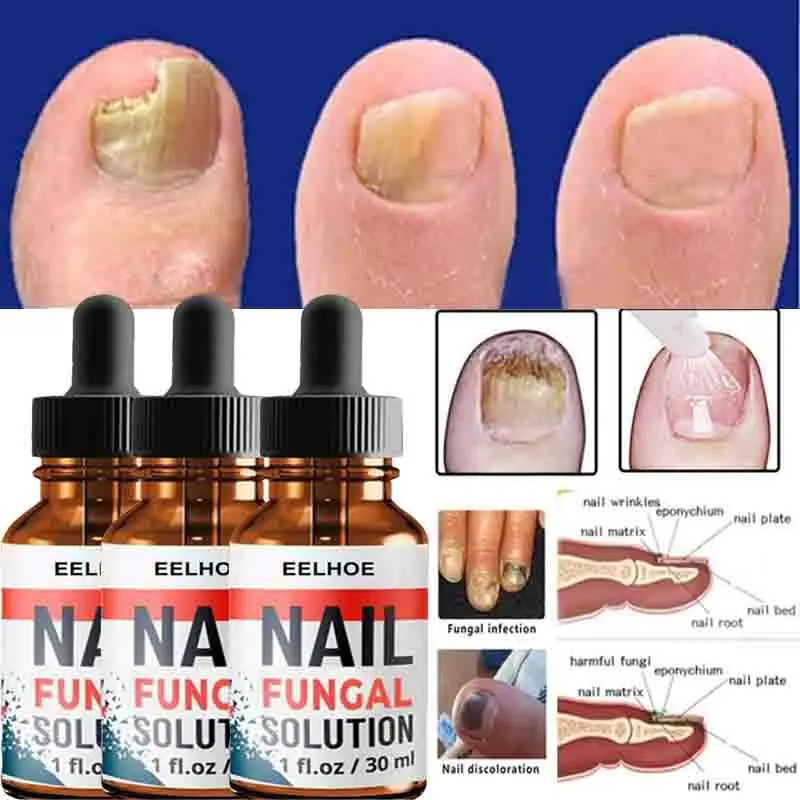 With long-term chronic inflammatory processes, a change in the shape and structure of the nail is possible. Diagnosis of paronychia is usually not difficult and is made on the basis of the results of an examination by a specialist; in some cases, additional research methods are used to clarify the cause of the pathology. Treatment of paronychia is carried out by traditional anti-inflammatory, antibacterial and other means, depending on the etiology of the disease.
With long-term chronic inflammatory processes, a change in the shape and structure of the nail is possible. Diagnosis of paronychia is usually not difficult and is made on the basis of the results of an examination by a specialist; in some cases, additional research methods are used to clarify the cause of the pathology. Treatment of paronychia is carried out by traditional anti-inflammatory, antibacterial and other means, depending on the etiology of the disease.
- Causes of paronychia
- Classification and symptoms of paronychia
- Paronychia diagnostics
- Treatment and prognosis of paronychia
- Prices for treatment
General information
Paronychia or inflammation of the periungual fold (periungual felon) is an inflammatory lesion (usually acute, less common chronic forms) of the skin tissues surrounding the growth zone of the nails. This is a very common disease, almost every person at least once in his life suffered some form of such inflammation.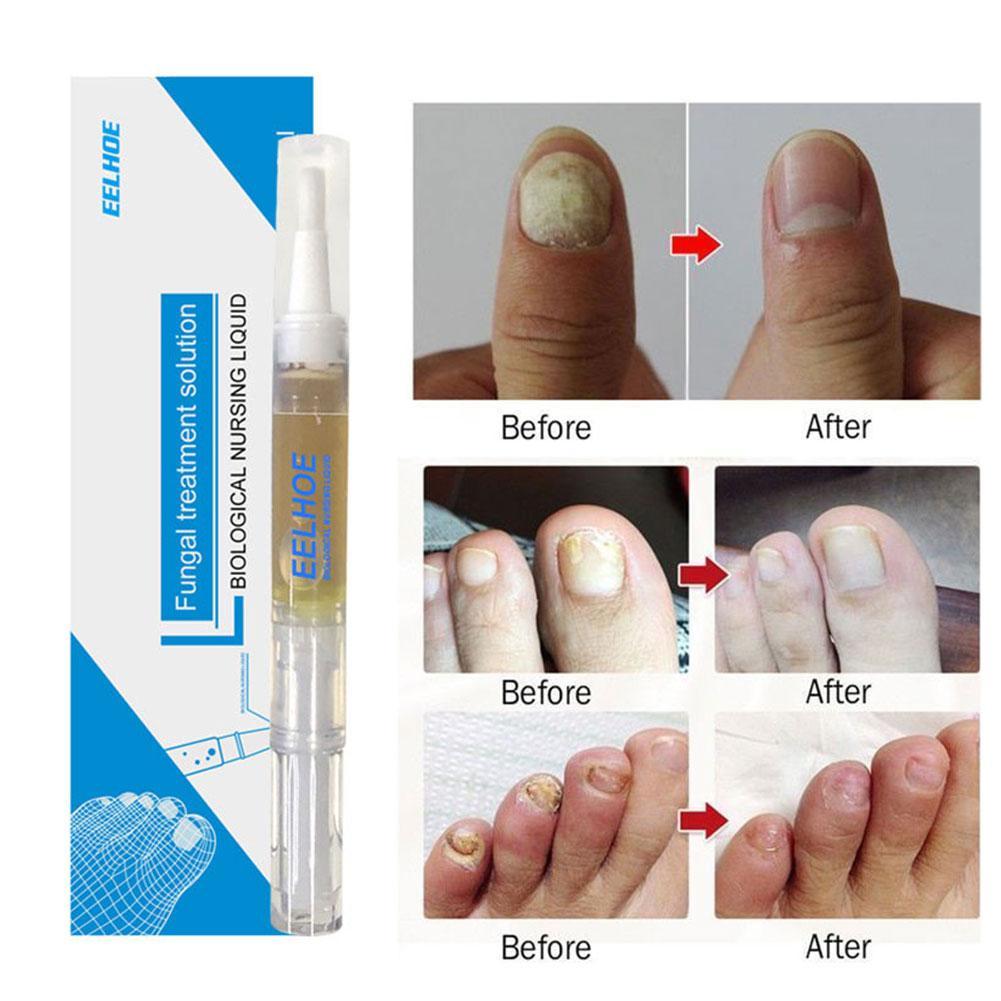 In persons who, due to professional duties, come into contact with industrial or household chemicals and some other means, paronychia can be considered as an occupational pathology. Often, inflammation acquires a purulent character with the formation of an abscess of the nail fold, while loss of the nail or the transition of the infectious process to deeply located tissues with the development of tendinitis and even purulent fusion of the phalanx may occur. Timely treatment of paronychia is of great importance to prevent the complications of this inflammatory disease.
In persons who, due to professional duties, come into contact with industrial or household chemicals and some other means, paronychia can be considered as an occupational pathology. Often, inflammation acquires a purulent character with the formation of an abscess of the nail fold, while loss of the nail or the transition of the infectious process to deeply located tissues with the development of tendinitis and even purulent fusion of the phalanx may occur. Timely treatment of paronychia is of great importance to prevent the complications of this inflammatory disease.
Paronychia
Causes of paronychia
Modern dermatologists classify paronychia as a polyetiological disease with many forms and varieties of clinical course. The most common form of this condition is due to the penetration of infectious agents into the tissues of the periungual ridge: Staphylococcus aureus, streptococcus, fungi and a number of others. Predisposing factors for infection and the subsequent development of paronychia are trauma, frequent mechanical stress, high temperatures, and contact with certain chemicals. After an infectious agent enters the tissues, it begins to multiply, triggering immune response mechanisms that manifest themselves as simple or purulent inflammation.
After an infectious agent enters the tissues, it begins to multiply, triggering immune response mechanisms that manifest themselves as simple or purulent inflammation.
This is how the inflammatory process develops in almost 90% of cases of acute paronychia. At the same time, the focus of inflammation of the periungual ridge is mostly located on the side of the palmar surface of the finger, but due to the peculiarities of the anatomical structure of this anatomical structure and complex lymphatic circulation in this area, the main manifestations are localized on the back side. The defeat of the underlying tissues can cause a wide spread of the infectious process to deeply located tissues of the finger and even the hand.
The development of inflammation or abscess can cause not only infection – similar manifestations sometimes accompany other dermatological diseases. In particular, paronychia is isolated due to eczema, psoriasis and some forms of syphilis. As a rule, in these cases, the inflammation is not acute, but chronic, it is accompanied by pronounced changes in the structure and shape of the nail. The reasons for the development of paronychia in eczema or psoriasis have not been thoroughly studied, as, in fact, the etiology of these conditions in general. Another form of inflammation of the nail fold without infection is the professional types of paronychia that occur when working in factories, in contact with household chemicals and other substances. Inflammatory manifestations in such cases are due to the direct damaging effect of certain compounds on the tissues of the periungual ridge.
As a rule, in these cases, the inflammation is not acute, but chronic, it is accompanied by pronounced changes in the structure and shape of the nail. The reasons for the development of paronychia in eczema or psoriasis have not been thoroughly studied, as, in fact, the etiology of these conditions in general. Another form of inflammation of the nail fold without infection is the professional types of paronychia that occur when working in factories, in contact with household chemicals and other substances. Inflammatory manifestations in such cases are due to the direct damaging effect of certain compounds on the tissues of the periungual ridge.
Classification and symptoms of paronychia
There are many clinical forms of paronychia. The reason for their differences lies in the polyetiology of the disease, which affects the course of the pathology. In addition, differences largely determine the tactics of treating paronychia, the principles of therapy can vary significantly depending on the etiology of inflammation of the nail fold. The modern clinical classification of paronychia used in dermatology includes the following types of pathology:
The modern clinical classification of paronychia used in dermatology includes the following types of pathology:
 If left untreated, purulent inflammation may spread to other tissues of the finger and hand. In rare cases, there is a metastatic transfer of the pathogen with the development of abscesses in the internal organs.
If left untreated, purulent inflammation may spread to other tissues of the finger and hand. In rare cases, there is a metastatic transfer of the pathogen with the development of abscesses in the internal organs. Both pathogenic bacteria and various chemical influences (contact with caustic compounds, components of household chemicals) can act as an etiological factor. Ulcers are quite painful and often become the entrance gate for secondary infection, which leads to the development of purulent paronychia.
Both pathogenic bacteria and various chemical influences (contact with caustic compounds, components of household chemicals) can act as an etiological factor. Ulcers are quite painful and often become the entrance gate for secondary infection, which leads to the development of purulent paronychia.Diagnosis of paronychia
It is quite easy to determine the presence of inflammation of the nail fold by examining the patient’s fingers. Swelling and redness are almost always detected, and pain is detected on palpation. The pyococcal form of the disease is characterized by a sharply swollen roller, which may acquire a yellow tint due to the accumulation of pus. Additional diagnostic methods help to more accurately establish the form of paronychia. To make a diagnosis, an anamnesis is taken, microbiological studies are prescribed, in some cases a general dermatological examination (to detect eczema or psoriasis) and serological tests (to determine syphilis) are used.
Swelling and redness are almost always detected, and pain is detected on palpation. The pyococcal form of the disease is characterized by a sharply swollen roller, which may acquire a yellow tint due to the accumulation of pus. Additional diagnostic methods help to more accurately establish the form of paronychia. To make a diagnosis, an anamnesis is taken, microbiological studies are prescribed, in some cases a general dermatological examination (to detect eczema or psoriasis) and serological tests (to determine syphilis) are used.
When questioning and clarifying the anamnesis of a patient with paronychia, it is possible to detect professional forms of this disease – the pathology often affects bakers, laundry workers and workers in chemical enterprises. The identification of comorbidities (eczema, psoriasis, syphilis) in the patient’s history indicates their role in the development of paronychia, especially in the characteristic clinical picture of the corresponding disease. In the presence of purulent or serous secretions, a microbiological examination (microscopy, inoculation on selective nutrient media) is performed to more accurately identify the pathogen.
In the presence of purulent or serous secretions, a microbiological examination (microscopy, inoculation on selective nutrient media) is performed to more accurately identify the pathogen.
Treatment and prognosis of paronychia
Treatment of paronychia is largely determined by the causes that provoked this disease. In pathology caused by infection of the nail fold, local antiseptics and ichthyol ointment are used. With the purulent nature of inflammation and the development of an abscess, surgical opening and drainage are performed, and antibiotic therapy is prescribed. For signs of candidamicotic paronychia, local forms of antifungal drugs (eg, clotrimazole) are used. If the inflammation of the nail fold is caused by exposure to some chemical compound, the patient is advised to limit contact with an aggressive substance or wear protective gloves. With paronychia due to eczema, psoriasis or syphilis, in addition to the general therapy of the underlying disease, corticosteroid ointments and ultraviolet irradiation of the affected areas are used.

 Chronic paronychia may result from prolonged exposure to chemicals.
Chronic paronychia may result from prolonged exposure to chemicals.